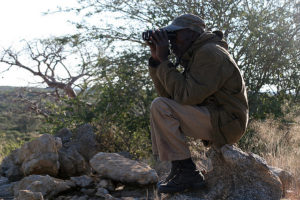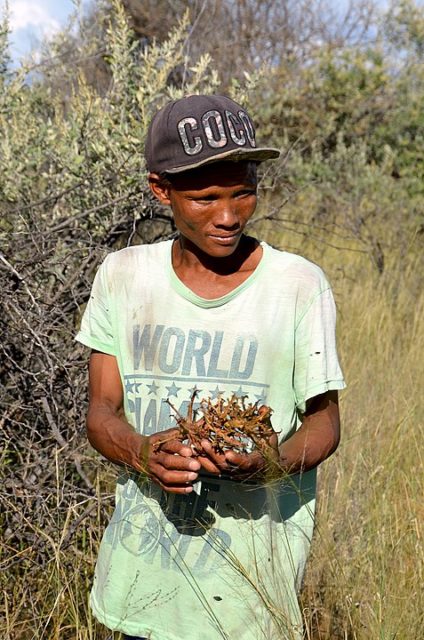The Nyae Nyae Conservancy of the Ju/’hoansi San has received a large grant to help them survive the loss of tourist revenue due to the pandemic. The Save Our Species grant from the International Union for Conservation of Nature (IUCN), also allocated to the N#a Jaqna Conservancy of the !Kung people, is designed to help preserve the considerable gains in wildlife management made in recent years by the two San societies of northern Namibia. The grant is funded by the European Union.

The grant is designed to secure the livelihoods of the San wildlife rangers and to support a range of important measures that the conservancies have initiated to protect their desert environment. According to a news story last week, the COVID-19 pandemic has completely shut off the tourism and trophy hunting funding sources for the San people, the income from which they have come to depend on.
The specific issue for the two conservancies is that the salaries of the wildlife management officers, called Community-Based Natural Resource Management (CBNRM) rangers, have been funded by the fees paid by the visitors—the tourists and the hunters. With that source of revenue dried up, the IUCN grant will provide essential support for the wildlife management functions as well as for the economies of the surrounding communities.

The news story continues by describing the other income stream of the Ju/’hoansi, which has survived the pandemic—the harvesting of the Devil’s Claw plants. Income from the harvesting has continued despite the pandemic. Sales of the plants at an event last month earned about N$500,000 for 230 harvesters. A second sales event scheduled for October could bring in more money, potentially earning the Nyae Nyae people a total of 750,000 to one million Namibian dollars in 2020 (U.S. $45,000 to 60,000).
Out of the several news stories in this website in recent years about the plant and the money the Ju/’hoansi and the !Kung earn from gathering it, one paragraph in a news report from last November summed up the real importance for the people. It is worth repeating: “The two conservancies added that the effective management of their natural resources and their sustainable utilization are essential pillars of their beliefs. They are committed to ensuring that the people will continue to gather the devil’s claw roots sustainably for many years to come.”